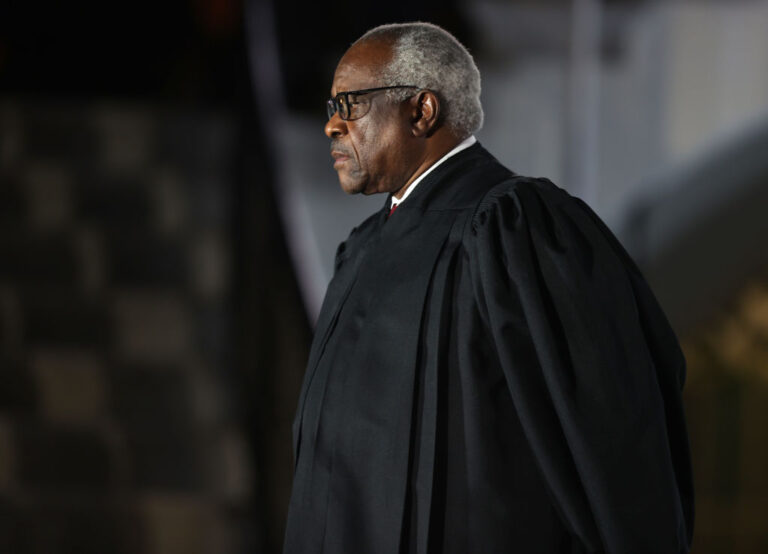Washington Examiner: Justice Thomas leaves the door open for future challenges to rent control

Rent control is a bad housing policy that won’t go away. Unfortunately, this term, the U.S. Supreme Court refused to review not one, not two, but three cases that challenged New York City’s 2019 iteration of the bad housing policy, euphemistically labeled “rent stabilization.” But thanks to Justice Clarence Thomas, the proverbial third strike might not be the last for opponents of rent control.
In a statement accompanying the last case the court denied, 74 Pinehurst v. New York, Thomas left the door open and provided a road map for future challenges.
This is important because rent control programs can be complex. And understanding what the court is looking for in a future challenge is crucial to crafting a successful argument.
While rent control programs vary, they generally function in two basic ways. First, the government caps rent at a certain amount, with that cap sometimes tied to inflation or some other economic indicator. Second, the government requires the property owner to extend leases with tenants at the capped price, regardless of what the owner wants to charge.
When the Supreme Court first approved this type of scheme, it did so in the wake of World War I and the pressures that returning soldiers and wartime put on Washington, D.C., and New York City. The court accepted that these unique circumstances merited approval of “emergency” rent control. Thus, the court temporarily allowed what was at the time seen as a shocking encroachment on long-understood property rights.
A few years later, the court implied that an end to the wartime emergency should lead to the end of Washington, D.C.’s rent control program. But in the years since, rent control has stayed, even though the “emergency” justifying it has long since passed.
It’s easy enough to see why.
On the surface, rent control seems like a surefire way to make renting affordable for all. And in the short term, it benefits tenants of rent-controlled properties.
But over the long term, nobody benefits from rent control. When rent is capped, property owners are loath to rent their property, creating a shortage of supply. Similarly, developers decide against building new rental properties because the return on investment isn’t worth it.
Owners can’t afford to make improvements to their rental properties, since the rent cap limits their ability to recoup that investment. This does not eliminate rental housing, but it reduces the quality of available rental property stock.
Rent control also discourages mobility by locking tenants into spaces with below-market rents, which limits the economic growth that might otherwise occur in a community when people change jobs and move.
All these factors and more make rent control a bad idea policywise.
But it’s not just bad policy, it’s also blatantly unconstitutional.
As Justice Thomas explained, just because the court refused to hear the three cases on it this term does not mean a future challenge won’t be successful.
A closer look at 74 Pinehurst helps show why.
The petitioners in 74 Pinehurst were owners of small and midsize apartment buildings who argued that New York City’s rent control “regulations grant tenants and their successors an indefinite, infinitely renewable lease terminable only for reasons outside of the landlord’s control.”
If true, doesn’t this amount to the New York government turning private property into public housing by way of rent control? After all, the tenants can stay indefinitely on the owner’s property at terms set not by agreement of the property owner and tenant, but by the government. The most basic property right is the ability to determine who can exclude others from your property, but in rent control, the government makes that decision.
Although Thomas acknowledged that this is “an important and pressing question,” he said that the 74 Pinehurst case did not set up that question well. Why? Because, he wrote, the landowners had not presented specific facts involving definite landowners with definite tenants who refused to leave despite the property owner wanting to end their lease.
Further, Thomas explained that the petition did not “clearly” explain how New York’s complex rent control regulations worked together to “completely bar landlords from evicting tenants.” In other words, Thomas said the court wants a case that involves a specific set of facts with an identifiable, aggrieved landowner who wants to evict but can’t because of the local rent control scheme. The case must be simple to understand so that the constitutional injury cannot be easily hidden.
Rent control is a pernicious problem, and when the right case gets to the court, it will be heard on the merits. Anyone suffering from the negative consequences of rent control would be wise to consider litigation to fight for their constitutional property rights. Public interest law firms such as mine — the Pacific Legal Foundation — would be interested to hear their stories.
This op-ed was originally published in The Washington Examiner on April 5, 2024.



